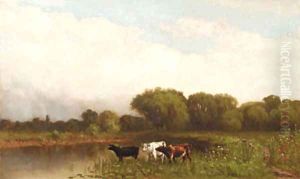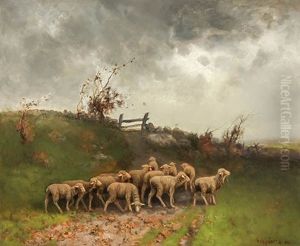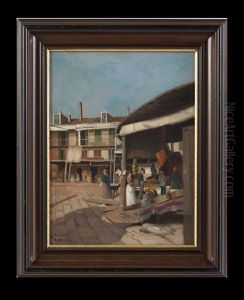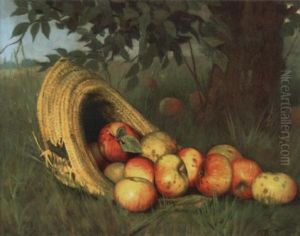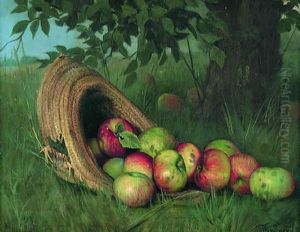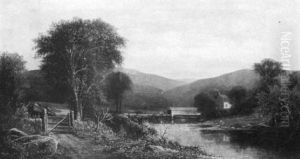Rufus Way Smith Paintings
Rufus Way Smith, an American artist born in 1859, made significant contributions to the art world during the late 19th and early 20th centuries. His life spanned a period of immense change in the United States, from the aftermath of the Civil War through the dawn of the modern age, and his art reflects the evolving American landscape and spirit of his time. Smith's work, though not as widely recognized as some of his contemporaries, provides a unique window into the era's aesthetic and cultural shifts.
Smith hailed from the Northeastern United States, a region that was a hotbed of artistic activity and innovation during his lifetime. He was part of a generation of artists who sought to capture the essence of America's landscapes, cities, and people, contributing to the rich tapestry of American art. Smith's early work was influenced by the Hudson River School, known for its romantic and somewhat idealized depictions of the American countryside. However, as his style evolved, he began to incorporate elements of impressionism and realism, reflecting broader trends in American and European art.
Throughout his career, Smith was dedicated to exploring various subjects, from serene landscapes and bustling city scenes to intimate portraits. His ability to capture light and shadow, as well as his nuanced use of color, set his work apart. Despite his talents, Smith's art did not achieve the same level of fame as some of his peers. Yet, he was respected within artistic circles, and his paintings were exhibited in several prominent venues, including the National Academy of Design.
Smith's later works reveal an artist deeply contemplative of his place in a rapidly changing world. These pieces are characterized by a more introspective quality, delving into themes of isolation and the passage of time. This shift in focus underscores Smith's adaptability and his continuous quest for artistic growth.
Rufus Way Smith passed away in 1938, leaving behind a body of work that, while perhaps not as celebrated as that of some of his contemporaries, offers invaluable insights into the American experience. Today, his paintings can be found in private collections and museums across the United States, serving as a testament to his skill and vision. His contributions to American art, though understated, continue to be appreciated by art historians and enthusiasts who recognize the subtle beauty and depth of his work.
